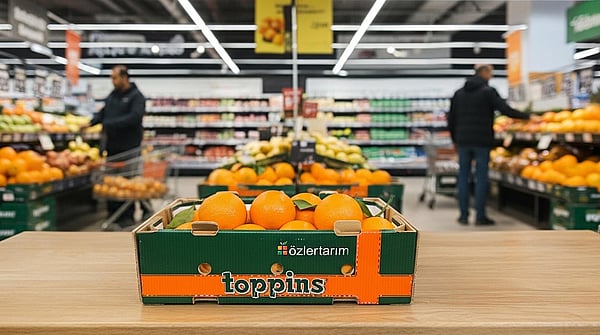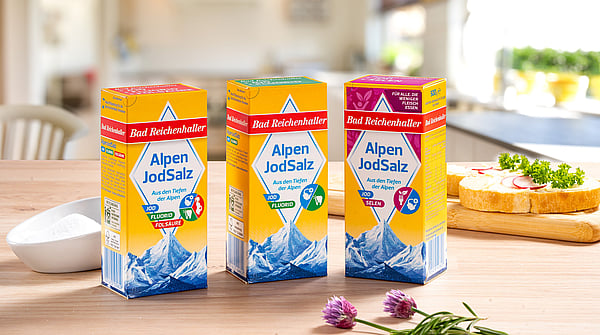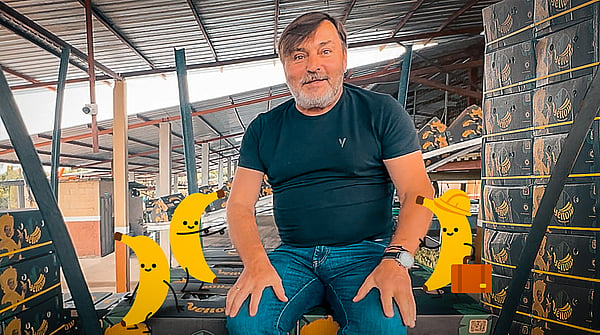Rethinking sustainable food packaging for freshness, impact and less waste
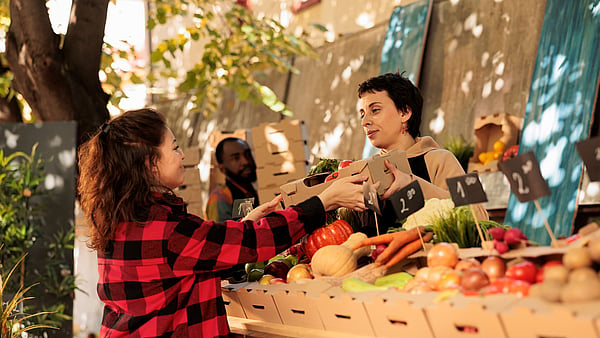
From farm to fork, the right packaging is key to reducing food waste, protecting margins and meeting sustainability goals. Discover how corrugated and solid board solutions can extend shelf life, keep your produce fresher for longer, ensure compliance with regulatory demands and enhance consumer trust – while transforming efficiencies across the fresh supply chain.
In the world of fresh produce, there are few things as satisfying as a punnet of summer-sweet strawberries or a crate of glossy aubergines. But behind that satisfying shelf moment lies a fragile balancing act, one that fruit and vegetable producers, packers and retailers know all too well. Getting produce from field to fridge is no picnic; it means navigating a long list of expectations: freshness, hygiene, shelf life, visual appeal and, increasingly, environmental responsibility.
And then there’s the packaging. More than simply the box that holds things together, packaging is a central player in the food system. It must preserve, protect, present and impress, all while keeping carbon footprints in check. The modern produce aisle may look vibrant and abundant, but behind the scenes, decision-makers are grappling with growing complexity and increasing consumer scrutiny. Packaging is right at the heart of this balancing act.
What you’ll learn in this article
- How smarter packaging design helps reduce fresh produce waste
- Why corrugated and solid board are the go-to packaging for fresh produce
- What today’s consumers expect from fruit and vegetable packaging
- How innovative designs like TowerTray improve logistics and shelf appeal
- How co-creation and testing drive better, more cost-effective packaging solutions
The Holy Grail of packaging design is to go beyond simply carrying goods – it should solve real-world problems. For fresh produce, this means rethinking everything: from ventilation and stacking strength to recyclability and shelf appeal.
Let’s explore the latest innovations in sustainable food packaging, and how corrugated and solid board solutions are helping reduce food waste while meeting retail demands.
Handle with care: why fresh produce demands smarter, more sustainable packaging
Few products are as sensitive and time-critical as fresh produce. From the moment it’s harvested, the clock starts ticking. Temperature, humidity, airflow, pressure points – get any of them wrong, and you’re looking at spoilage, waste and lost revenue.
According to the UN Food and Agriculture Organization, around 14% of food is lost between harvest and retail globally, much of it due to damage or decay. In the case of fruit and vegetables, that figure climbs even higher – estimated at up to 30% across some categories.
These losses are not just expensive, they’re environmentally costly. The UNEP Food Waste Index reports that food loss and waste contribute 7% of global greenhouse gas emissions, while gobbling up 30% of the world’s agricultural land and 6% of its freshwater resources.
Put simply: every squashed tomato is more than just a mess, it’s a missed opportunity to reduce environmental impact.
What consumers want (and what keeps them up at night)
Consumers today want the complete package: recyclable, compostable, good-looking, easy to carry and ‘just enough packaging’. However, according to McKinsey’s 2025 consumer survey, the top priorities remain price and quality – no surprises there. When it comes to fresh produce, sustainability suddenly jumps up the list.
Shoppers see fruit and veg as ‘natural’ products and want packaging that reflects that. In countries like Germany, France and Sweden, consumers place a particularly high emphasis on recyclability and renewable materials. In fact, recyclability ranked #1 across all countries in McKinsey’s study when consumers were asked what makes packaging sustainable.
That said, function still trumps form. Food safety, shelf life and product protection remain non-negotiable. In other words, packaging must be both sustainable and high-performing. That’s where things get complicated – and where corrugated packaging and solid board start to shine.
Why corrugated and solid board are ideal for fresh produce packaging
Let’s be honest, containerboard grades and corrugated board don’t usually get everyone’s heart racing. But for fresh produce, corrugated and solid board packaging is quietly doing the heavy lifting behind the scenes.
It’s strong, lightweight, customisable, and – crucially – made primarily from renewable, recyclable fibre. According to the Journal of Food Engineering, over 90% of exported produce is shipped in corrugated containers, and for good reason.
Here’s why these materials are especially well-suited to the fruit and vegetable sector:
1. They let produce breathe
Unlike vacuum-packed bacon or foil-sealed granola, fruit and vegetables are still alive after harvest. They respire, releasing moisture and gases like ethylene, which accelerate ripening. Without proper ventilation, produce sweats, spoils and ends up looking like a long-lost relic from the back of your fridge.
Corrugated and solid board boxes can be engineered with airflow holes to allow:
- Rapid post-harvest cooling
- Consistent airflow during transport
- Ethylene gas circulation or release, depending on ripening needs
Take bananas, for instance. Their boxes are specially designed with vents and hand holes to control ripening and reduce mould. The same applies to berries, which benefit from breathable formats that preserve firmness without sacrificing hygiene.
2. They stack like champions
Ever wondered how peaches arrive intact despite being stacked pallet-high in transit? That’s where structural strength comes in. Corrugated board is engineered with crush-resistant flutes and can be reinforced with double-wall flutes or corner supports to absorb shocks and resist compression from the weight above. Like a well-built athlete, strong packaging helps to absorb impacts and protect under pressure.
Take Mondi’s TowerTray, for example: its reinforced corners are designed to handle vertical pressure and reduce shifting during transport. This makes it ideal for delicate fruits like peaches, ensuring they’re protected even at the bottom of a load. The stackable design also means better use of pallet space, lower transport costs and fewer losses – which we all care about.
Standardised footprints like 600x400 or 400x300 mm ensure compatibility and efficient palletisation across growers, packers and retailers. Stack it high, stack it smart.
3. They look good on the shelf
Packaging isn’t just about transport, it’s about selling. And visual appeal at the point of sale (POS) is crucial to consumer choice. Corrugated trays and solid board containers can be printed directly with branding, product info or origin stories for added shelf-appeal. They go straight from truck to shelf, reducing restocking time and keeping displays looking tidy.
For consumers, that means fewer plastic bags, less fiddling and a cleaner conscience. For retailers, it means efficiency, visibility and a more premium feel – especially important when positioning seasonal or high-value items. And for producers, it means stronger shelf presence and brand recognition right through to the customer.
Sustainable by design
Packaging often gets blamed in sustainability debates, but the right packaging can actually reduce environmental impact by preventing food waste.
- Corrugated solutions (at least those made by Mondi) are 100% recyclable.
- Over 80% of corrugated materials are being recycled across Europe.
- Water-based inks and repulpable coatings ensure recyclability, even for moisture-resistant packaging.
- Semi-chemical flutings deliver high strength, dimensional stability and humidity resistance – ideal for protecting fresh food during long-distance shipping and in challenging conditions.
- The production process naturally sanitises corrugated material due to high temperatures, providing a hygiene advantage over reusable plastic crates.
And consumers are noticing. In McKinsey’s study, paper-based solutions enjoy a far more favourable perception, particularly in Germany, the UK and Sweden.
How co-creation is driving innovation in food packaging
Here’s the thing about good packaging: it doesn’t come from guesswork. It comes from collaboration.
Increasingly, food producers and retailers are working closely with packaging experts to develop custom solutions – ones that reflect not just technical specs, but real-world constraints and opportunities. That might mean adjusting ventilation for a particular apple variety, refining stacking tolerances or trialling new coatings that can handle condensation without compromising recyclability.
To support this, some manufacturers offer dedicated innovation platforms; places where teams can explore design ideas, run shelf-life simulations and prototype new formats. At Mondi, this co-creation process is structured through a ThinkBox approach: a space, physical or virtual, where ideas are stress-tested and refined with input from across the supply chain.
Good packaging starts with smart thinking – and ends with better design.
Wrapping it up (sustainably, of course)
The packaging landscape for fresh produce is evolving fast towards more sustainable alternatives. The shift towards mono-material, recyclable solutions reflects a broader push for materials that can keep up with both environmental standards and supermarket logistics. Paper-based trays and corrugated alternatives are recyclable, plus legislation such as the EU Packaging and Packaging Waste Regulation (PPWR) is increasingly guiding brand decisions.
Meanwhile, shelf-life extension is no longer just a nice-to-have. With global supply chains as unpredictable as a ripe avocado, packaging is stepping up to preserve freshness from field to consumer. Smart airflow designs and humidity-controlling papers are showing that sometimes, good structure beats cling film.
Lastly, functionality and labelling are getting smarter. Whether it’s QR codes linking to a product’s backstory or minimalist designs that whisper “natural” rather than shout “sustainable!”, packaging is doing more with less – and communicating more while saying less.
In short, tomorrow’s fruit and vegetable packs need to work harder, last longer and explain themselves better. All without falling apart under pressure.
Packaging that does it all?
There’s no silver bullet in produce packaging. Every fruit and vegetable brings its own quirks and demands. But what is becoming increasingly clear is that corrugated and solid board packaging tick more boxes than most.
They protect. They ventilate. They stack. They display. They are recyclable. And they do all this while aligning with both food producers’ and retailers’ expectations and regulatory pressures around sustainability.
For food producers and retailers navigating this complex landscape, the opportunity is not just to choose better packaging, but to co-create solutions that rethink packaging as a strategic enabler of both product success and environmental responsibility.
Because in the end, keeping a strawberry intact might just be the most delicious way to cut carbon emissions in the fresh produce supply chain.
And if you ever find yourself stuck between shelf life and carbon footprint, know this: you don’t have to go it alone.
Your challenge is our challenge.
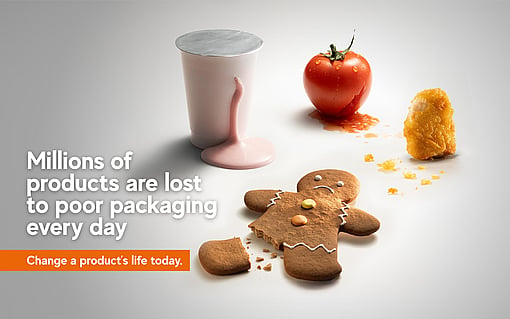
You create excellence. We package it.
Discover our shelf-ready and retail-ready packaging solutions that delight customers while enabling you to restock quickly and safely.
